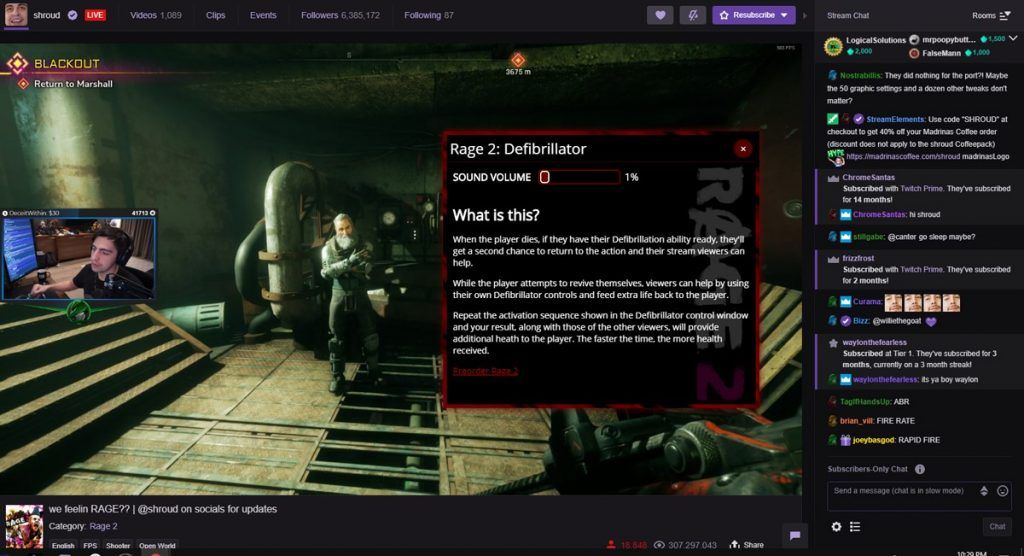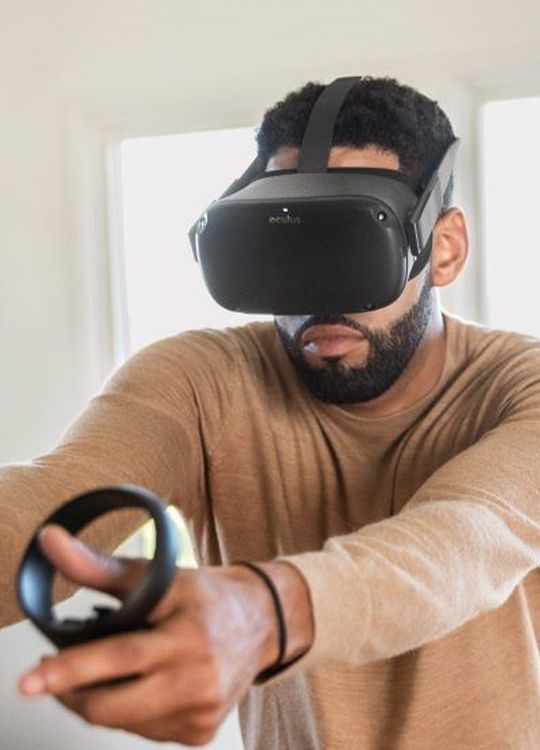The Future of Interaction
With new media channels popping up what seems like every day, it’s become more important than ever to create content that consumes your audience and not the other way around. One method for creating such content is by leveraging cutting edge interactive media.
For a bit of a background, interactive media is defined as any type of media that responds to user input, the most popular example of which currently being video games.
Advancements in AR/VR, consumer technology, and the increasing prevalence of open source APIs have all contributed to the increasing sophistication of this entertainment medium as we move into the new decade.
Current Interactive Media Examples
Let’s dive in to some of the most popular and captivating current of examples of interactive media.
Open APIs and Stream Extensions
API stands for “application programming interface” and the public release of these interfaces allows third-party developers to create applications and extensions that can function and communicate within the hosting interface. One of the most popular settings for such activity is on the massively popular video game live-streaming website Twitch.tv.

When Twitch first opened its API to developers, in-stream extensions began as simple, clickable information panels that would provide background information on the game or allow users to interact in simple voting polls. The past few months have seen a sharp increase in the sophistication of these extensions, however, with some game developers factoring in Twitch extensions to the design process of their games.
In the example above, we can see an in-stream extension built for the game Rage 2 by developers Avalanche Studios and id Software. The game released on May 14, 2019 and represented a substantial leap forward in stream-viewer engagement.
This particular extension allows viewers in the streamer’s lobby to actively influence and participate in the game the streamer is playing – in this case, the hyper-popular streamer known as Shroud.
When Shroud’s character is killed, he’s prompted to activate a defibrillator through a series of button sequences in order to revive himself. Via the stream extension, the same defibrillator screen is displayed across the entire stream, and the viewers are asked to perform the sequence as well. Based on the performance and success of the collective stream, Shroud’s character will be given additional health.
Already a high-engagement platform by nature of the content, Twitch also leads the industry in the development of interactive content by offering increased access to developers and content creators.
Related Reading:
Utilizing Emerging Media Channels: Twitch Advertising
The Mobilization of Augmented Reality
Back in March of 2016, the release of the Oculus Rift marked what many believed would be the beginning of the next virtual reality era for digital media.
Fast forward to 2019, and while VR headsets have maintained a relative degree of popularity on the consumer level, long-term sales and commercial adoption certainly haven’t lived up to the initial hype.
However, the International Data Corporation (IDC) indicated that the AR/VR headset market saw a YOY growth of 9.4% in Q3 of 2018, primarily driven by the introduction of standalone headsets into the market.
Traditional headsets like the Oculus Rift and HTC Vive required powerful desktop computers to be able to operate, presenting a significant cost-barrier to entry for most interested consumers.
By introducing headsets that are fully standalone (no computer needed) and at a lower price point, VR has finally become accessible to the average consumer.

While the future of VR seems to be looking brighter, its alphabetic predecessor, AR, seems to have taken over the pop-culture spotlight.
Minecraft Earth, a new augmented-reality mobile game, was a featured presentation during Apple’s most recent WWDC event.
Augmented Reality exploded onto the pop-culture scene with the release of Pokemon Go back in July 2016. $2.3 billion in total revenue later, and the development of AR mobile games has become a significant focus of app developers.
Gaming apps were, in fact, the single largest category of app downloads in 2018, comprising 24.86% of total app downloads, according to Statista.com.
One of the key differences between VR and AR is that augmented reality allows for a more social experience while VR fully immerses the user and isolates them from the rest of the world.
AR is most notably used in applications like Snapchat and Instagram for dynamic face-filters, further exemplifying the social aspect of the medium.
Choose Your Adventure Experiences Are on the Rise
Interactive media is even moving from game controls to remote controls, as advancements in TV processing capabilities and “smart” functionality has transformed televisions into interactive hubs.
Consider the recent Black Mirror episode, Bandersnatch.
 By providing selectable options throughout the episode, viewers had the opportunity to “pick their own path” and decide how they wanted the story to play out. Offering a myriad of potential paths and alternate endings, the episode was wildly popular and encouraged friends and families to spend well over its hour-long runtime clicking their way through various plot options.
By providing selectable options throughout the episode, viewers had the opportunity to “pick their own path” and decide how they wanted the story to play out. Offering a myriad of potential paths and alternate endings, the episode was wildly popular and encouraged friends and families to spend well over its hour-long runtime clicking their way through various plot options.
Whether you’re a fan of this style or not, Netflix has already decided to invest in similar interactive story-telling content going forward
Related Reading:
Vertical Video: How Mobile Video is Changing the Dominant Format
The Big Picture: Critical Elements of Interactive Media
These emerging media trends indicate that content creators and major developers are thinking past content that’s merely engaging. Instead, they’re moving toward content that users can actually engage with. By pulling viewers into the experience and allowing them to actively participate in the content, users receive a more personalized experience while producers enjoy a more active and dedicated audience.
If you’re looking for a way to draw in an audience and retain viewership, consider incorporating interactive media into your content efforts.
If you need a hand getting started, we’d love to help out. Drop us a line, and we’ll be in touch!




Join the Discussion